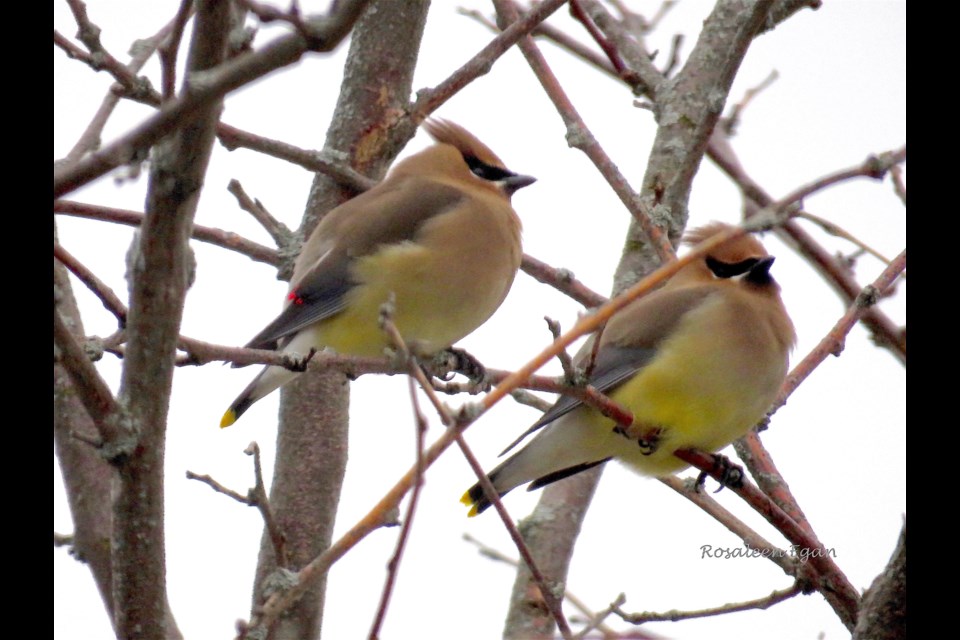One windy, wintry-type day the week before last, I looked out my window and saw nine cedar waxwings sitting in the tree at the end of my deck.
This was remarkable to me as this is only the second time in many years living on the farm that I have seen any.
It made me think about this locust tree at the end of the deck and the many species of birds who have found it a place to rest to my enjoyment and, I assume, theirs.
Apart from a recent hiatus, I’ve been writing this column about the birds that come by my home for more than two years. Many of the columns feature birds that land in this tree. This is because there is clear sight from my kitchen window, across the deck to the tree. Imagine the dearth of material if the tree was not there.
As I have mentioned here before, I have horrible cellphone reception, and one good talking spot is right near my kitchen door that is half-window. I keep my camera handy, and sometimes manage to talk and take photos at the same time, sometimes with not very clear results in either activity.
The unexpected waxwings have me waxing poetic about trees and other plantings that support birds, bees, butterflies and, of course, ourselves by cleaning the air and offering sightings.
A flower, a shrub, a tree:
Food, habitat, wonder, beauty
Nourishment for nature, you, and me.
Perhaps I am not a poet, but I understand the inspiration.
Specific birds tend to prefer some specific trees for reasons from fruit they may produce to the height or density of growth. Just the same, trees, shrubs, and flowering plants generally offer habitat and shelter.
“To attract waxwings to your yard, plant native trees and shrubs that bear small fruits, such as dogwood, serviceberry, cedar, juniper, hawthorn, and winterberry,” suggests allaboutbirds.org. They eat the whole fruit including seeds, unlike some birds. Seeds pass through the bird and are dispersed for possible regeneration of plants.
They love berries and they also eat insects, sometimes on the fly zig-zagging over water.
Cedar waxwings are said to get their name from the red tips of secondary wing feathers that are reminiscent of sealing wax used to seal envelopes and official documents.
They also have yellow tail tips, and a facial mask that adds an air of mystery to this classy-looking bird. I noticed they are described as slender and about the size of a starling. The birds in my tree were puffed out to protect themselves from the wind.
Cedar waxwings have increased their range and population in the past 20 years. Birdsoftheworld.org says, “Several factors may have fostered this growth in range and numbers: the creation of edge habitats conducive to fruiting trees and shrubs, especially as farmlands regenerate to forests; the planting of fruiting trees and shrubs in rural and urban areas; and, perhaps, the reduction of hard pesticides in many forms of agriculture.”
When doing landscaping this spring, please consider the difference a tree can make and, where possible, choose native plantings.
It seems migratory patterns are not fully understood, but cedar waxwings are social birds that form large flocks that ebb and flow in terms of numbers. The birds in my tree headed south from here. It occurs to me that perhaps due to the weather they were turning around and going back to warmer climes.
In any case, I am pleased they stopped by and added warmth to my day.
I share experiences of bird visits to this property every few weeks. Until next time, keep your eye to the sky, and look for birds that may come by.
Rosaleen Egan is a freelance journalist, a storyteller, and a playwright. She blogs on her website rosiewrites.com.



